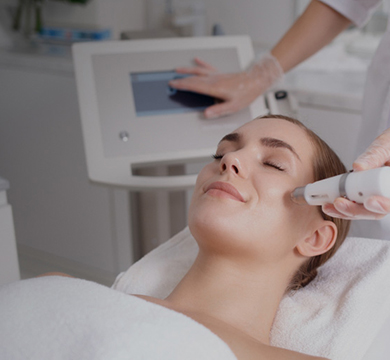Regrow Naturally: Advanced PRP Hair Treatment in Jaipur at CBLMHFH
Hair loss is a common problem that has affected millions of people globally, which leads to less self-respect and confidence. With the advancement of medical science, several remedies have been developed to combat this problem. Such a treatment has also come to mind due to PRP treatment for hair loss, its efficacy, and its natural process.
For people looking for PRP Hair Treatment in Jaipur, CBLM Holy Family Hospital (CBLMHFH) provides well-equipped facilities and skilled care to treat hair fall issues in its entirety.
Learning About PRP Treatment of Hair Loss
Platelet-Rich Plasma (PRP) treatment is a clinical procedure that uses the patient’s own blood to promote hair growth. The treatment process consists of three main steps:
- Blood Collection: Blood is drawn in small quantities from the patient, usually from the arm.
- Processing: The accumulated blood is introduced into a centrifuge, an apparatus that turns very fast in order to filter its components. This procedure secludes the platelet-rich plasma from other elements of blood.
- Injection: Concentrated PRP is then injected into targeted sites of the scalp suffering from thinning or hair loss.
The growth factors in PRP are said to reactivate latent hair follicles, increase blood supply, and stimulate the regrowth of hair strands, resulting in better hair density and health.
Science Behind PRP Therapy
Platelets are an important part of the treatment process in the body. They carry growth factors and proteins that help repair and reproduce tissues. When injected into the skull, these growth factors have the capacity:
- Stimulate the hair of the hair: To be activated again, promote inactive or recently transplanted hair follicles.
- Increase in blood flow: Increase blood supply to hair follicles so that they can get proper nutrients and oxygen.
- Increase hair thickness: Stimulate the thickening of the pre-existing hair fiber, which makes the hair thick.
Through the stimulation of the body’s own natural healing processes, PRP treatment provides a completely natural way to restore hair.
Benefits of PRP Hair Treatment
People choosing PRP Hair Treatment in Jaipur at CBLMHFH can enjoy various benefits:
- Non-Surgical Procedure: PRP treatment is a minimal procedure, where injections are taken without any incisions or stitches.
- Natural Results: Because the treatment employs the patient’s own blood, the chances of allergic reactions or infections are dramatically lowered.
- Quick Recovery: Patients can normally get back to their routine instantly after the treatment, with almost no downtime.
- Complementary Treatment: PRP can be combined with other hair loss treatments or drugs to improve outcomes.
PRP Treatment Process at CBLMHFH
The PRP treatment process at CBLMHFH is carried out with the highest attention to detail and care:
- Consultation: Careful evaluation is done to ascertain the patient’s eligibility for PRP therapy. This involves examination of medical history, hair loss pattern, and the cause behind it.
- Preparation: During the procedure day, the scalp of the patient is sanitized, and a local anesthetic can be applied to make the injections comfortable.
- PRP Drawing and Injection: Blood is extracted, processed to remove PRP, and carefully injected into areas of the scalp to be targeted.
- Post-Treatment Procedure: Patients are provided with advice regarding post-treatment care, including hair washing guidelines, prohibition on certain activities, and appointments for follow-up sessions if needed.
Who Can Gain from PRP Hair Treatment?
PRP therapy can be used for anyone with:
- Androgenetic Alopecia: Also referred to as male or female pattern baldness.
- Thinning Hair: Those with reduced hair volume or density.
- Hair Shedding: Those with heavy hair fall but without notable bald patches.
But it’s important to check with experts at CBLMHFH to establish personal eligibility since outcomes may differ depending on variables such as age, the severity of hair loss, and general health.
Safety and Side Effects
PRP remedy is exceptionally safe, especially whilst administered via professional practitioners inclusive of those at CBLMHFH. Because the treatment involves the patient’s own blood, the likelihood of hypersensitive reactions or infection is low. Mild aspect outcomes can occur in a few patients, inclusive of:
- Scalp Tenderness: Temporary pain or sensitivity at the injection points.
- Swelling or Redness: Slight inflammation that usually resolves within a few days.
- Itching: A slight itching feeling as the scalp heals.
Following post-treatment care instructions given by the medical team can reduce these side effects.
Why Opt for CBLMHFH for PRP Hair Treatment in Jaipur?
For individuals looking for Hair Loss Treatment in Jaipur, CBLMHFH is the best choice for several reasons:
- Expertise: A group of skilled dermatologists and hair restoration experts committed to providing the best results.
- Advanced Technology: Use of the latest equipment and methods to provide the best possible care.
- Personalized Approach: Customized treatment plans created to meet specific hair loss issues and objectives.
- Comprehensive Care: From first consultation to follow-up appointments after treatment, patients enjoy well-rounded care during their hair restoration process.
Supplementary treatment with PRP Therapy
Although PRP is highly effective as a stand-alone therapy, it is even more powerful in combination with other treatments. In CBLMHFH, physicians can also write a combination of the following for better results:
- Minoxidil or Finasteride: Oral or topical drug to regulate hormonal hair loss.
- Micronlying: to further promote follicle rejuvenation with PRP.
- Laser Therapy: To increase skull circulation and absorb PRP better.
- Nutritional counseling: Diet is important for hair health, and patients are advised to individual diet.
This holistic approach is what makes CBLMHFH a top hair loss treatment provider in Jaipur.
Book Your Consultation Today
Get started on rebuilding your confidence. Book a consultation with the skilled dermatology team at CBLMHFH and receive the finest hair loss treatment in Jaipur. You deserve to feel and look your best—and with PRP therapy, you definitely can.
Conclusion
If you are experiencing hair thinning, hair fall, or early baldness, don’t let the issue get out of hand. PRP Treatment for Hair Loss is a medically established, non-surgical remedy that revives your scalp and restores hair growth naturally. At CBLM Holy Family Hospital, you’ll be treated to world-class service, individualized care, and cutting-edge treatment protocols designed to meet your individual needs.
BLOGS





